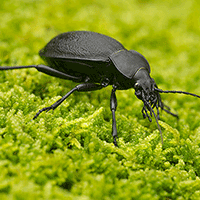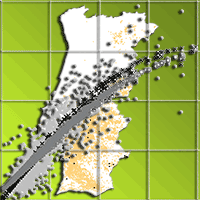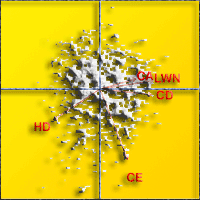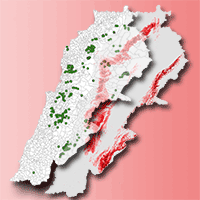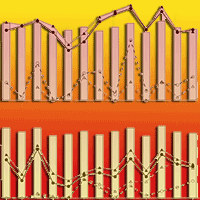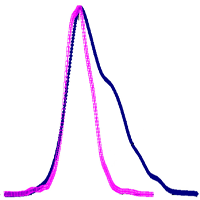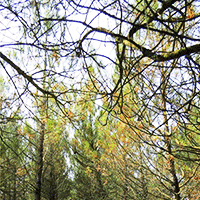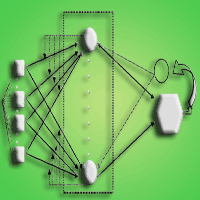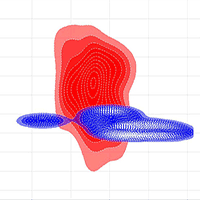
Analysing interaction effects in forests using the mark correlation function
iForest - Biogeosciences and Forestry, Volume 1, Issue 1, Pages 34-38 (2008)
doi: https://doi.org/10.3832/ifor0449-0010034
Published: Feb 28, 2008 - Copyright © 2008 SISEF
Research Articles
Abstract
The spatial distribution of trees in forests can be described and modelled by point processes where the points are given by the locations (coordinates) of the trees. Further properties of a tree like height or mean crown radius can be interpreted as so called marks of the considered point process characterising the points or trees in some way. The so called mark correlation function describes the spatial correlation of these marks in the observed point pattern. In this paper we introduce a special mark, the overlapping or crown index. We show that mark correlation functions for the considered marks help to understand interaction effects of forest trees.
Keywords
Forestry statistics, Marked point process, Interaction, Crown index
Authors’ Info
Authors’ address
Institute for Stochastics, TU Bergakademie Freiberg (Freiberg University of Mining and Technology), Prüferstrasse 9, D-09599, Freiberg (Germany)
TU Dresden (Dresden University of Technology), Institute for Cartography, D-01062, Dresden (Germany)
Corresponding author
Paper Info
Citation
Wälder K, Wälder O (2008). Analysing interaction effects in forests using the mark correlation function. iForest 1: 34-38. - doi: 10.3832/ifor0449-0010034
Paper history
Received: May 15, 2007
Accepted: Sep 02, 2007
First online: Feb 28, 2008
Publication Date: Feb 28, 2008
Publication Time: 5.97 months
Copyright Information
© SISEF - The Italian Society of Silviculture and Forest Ecology 2008
Open Access
This article is distributed under the terms of the Creative Commons Attribution-Non Commercial 4.0 International (https://creativecommons.org/licenses/by-nc/4.0/), which permits unrestricted use, distribution, and reproduction in any medium, provided you give appropriate credit to the original author(s) and the source, provide a link to the Creative Commons license, and indicate if changes were made.
Web Metrics
Breakdown by View Type
Article Usage
Total Article Views: 54709
(from publication date up to now)
Breakdown by View Type
HTML Page Views: 43855
Abstract Page Views: 3179
PDF Downloads: 6006
Citation/Reference Downloads: 132
XML Downloads: 1537
Web Metrics
Days since publication: 6504
Overall contacts: 54709
Avg. contacts per week: 58.88
Citation Metrics
Article Citations
Article citations are based on data periodically collected from the Clarivate Web of Science web site
(last update: Mar 2025)
Total number of cites (since 2008): 13
Average cites per year: 0.72
Publication Metrics
by Dimensions ©
Articles citing this article
List of the papers citing this article based on CrossRef Cited-by.
References
Experimental design and statistical inference for cluster point processes. Biometrical Journal 45: 1006-1022.
Gscholar
Applying fuzzy measures for Considering interaction effects in root dispersal models. Fuzzy Sets and Systems 158: 572-582.
Gscholar
Marked point processes in forest statistics. Forest Science 38: 806-824.
Gscholar
The influence of the forest canopy on nutrient cycling. Tree Physiology 22: 1193-1200.
Gscholar
Stochastic Spatial Regeneration Model for Pinus sylvestris. Scandinavian Journal of Forest Research 7: 377-385.
Gscholar
Fractals, Random Shapes and Point Fields. John Wiley & Sons, Chichester, UK.
Gscholar
Stochastic Geometry and its Applications. John Wiley & Sons, New York, USA.
Gscholar
On variograms in point process statistics. Biometrical Journal 38: 895-905.
Gscholar

